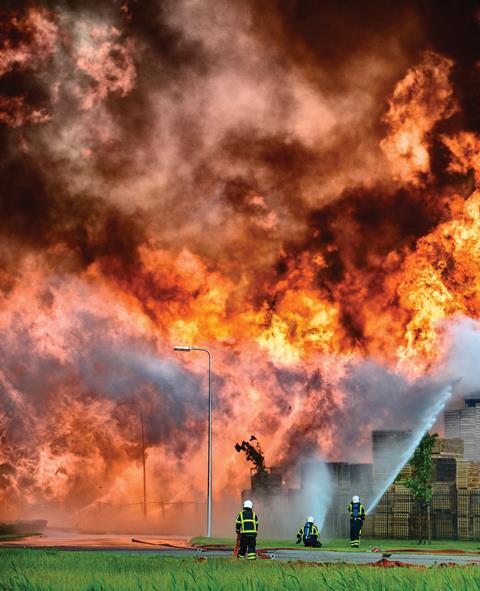A risk manager at a European retailer shared with StrategicRISK five risk management and insurance lessons learned after a warehouse blaze

Communication
It is paramount, to continually build a good relationship with your insurer; not only does it help silo approaches and processes for both sides, but it helps the insurer understand your risk profile and nature of your business which is key if you ever experience a loss.
Having those relationships already in place where you know and trust your insurer, and, where they understand your operations puts you in an already beneficial position when it comes to the efficient handling of the claim.
Claims
Insurers need to work closely in partnership with the insured, which means not solely focusing on the underwriting side of things.
A claim can happen at any time during the policy year, and the increasing complexity and pace in which businesses (in particular multinational businesses) operate at, means that loss adjusters and claims handlers need to be flexible in their approach post loss.
Fast paced agile organisations will do anything they can to get themselves up and running again, and insurers should pay more attention in recognising those efforts made in reducing their BI, and why certain decisions were made by the business in the way that they are.
Understanding how a business operates
As organisations grow globally, this in some ways, remove single points of failure or an over reliance on a particular site or operation, but it can increase complexity in operations especially when it comes to supply chain and stock allocation.
Geographical locations alter stock pool allocation based on lots of contrasting variables, which the insurer should understand when it comes to quantifying any loss of opportunity.
Insurers should not just focus on the risk that they are underwriting and providing coverage on, they need to look at the bigger picture, an organisations culture, ways of working, speed to market, risk appetite and supply chain to name a few can all influence the risk, the insureds decision making process and the claim.
The insured needs to really understand its policy; if salvage stock after a loss isn’t an option for brand reputation reasons, then it should not be included as part of your policy.
Likewise, the insurer should understand the decisions the business would automatically make post loss and look to build this into the policy.
Business continuity planning
Business continuity sometimes isn’t at the forefront of the strategic planning process, which is where things can fall down. Business continuity planning should remain fit for purpose and change, and the plan itself should not be too onerous – most importantly, shouldn’t sit on a shelf or drawer gathering dust!
When it comes to a major disruption or crisis, what’s key is ensuring your workforce knows how to respond and what to do! Keep it living through exercising, refresher sessions and post incident lessons learning.
Risk engineering
Yes, I know those risk engineering / surveys can be time consuming and a pain sometimes, but there is such great value in them if you have the right insurer matched to your business.
Some work really well in partnership in businesses and form part of the strategic planning process, which means the insured values their input in making their warehouses more protected and resilient.
It becomes even more valued if a loss is significantly reduced through those recommendations put forward by an insurer. Developing site specifications for current and future builds sets the minimum expectation when it comes to fire protection systems, H&S standards and other controls.




















No comments yet